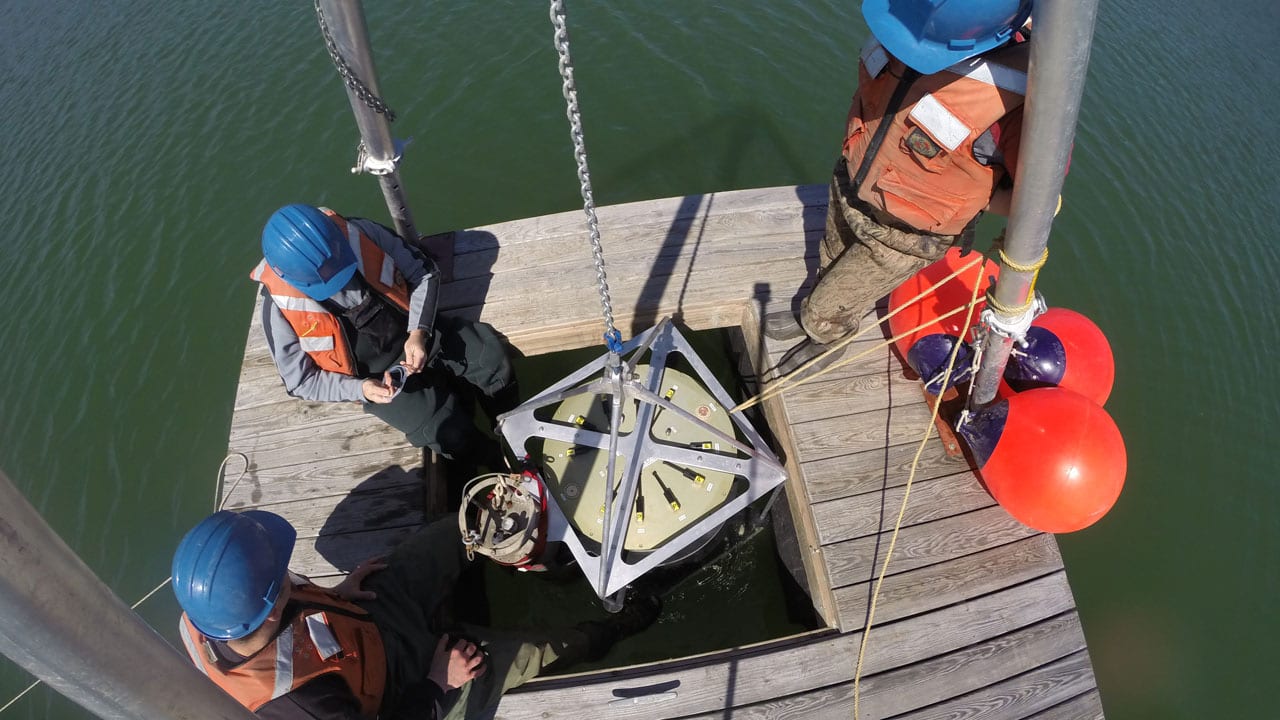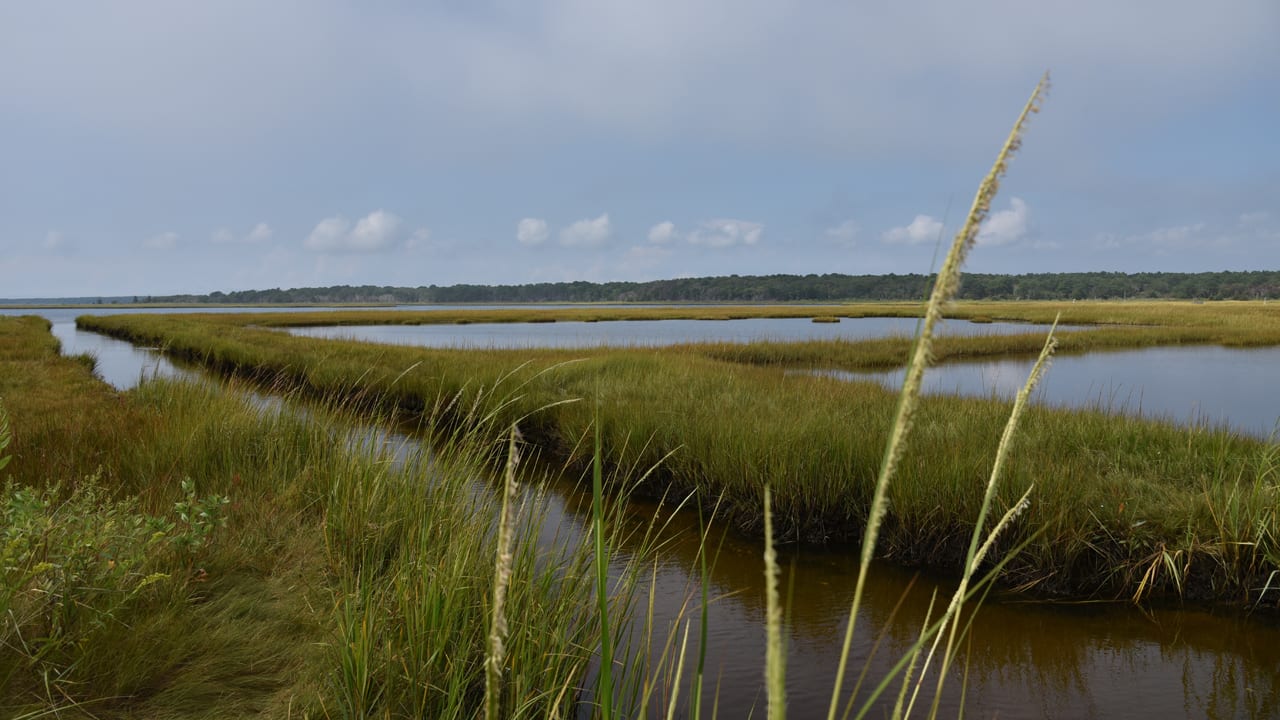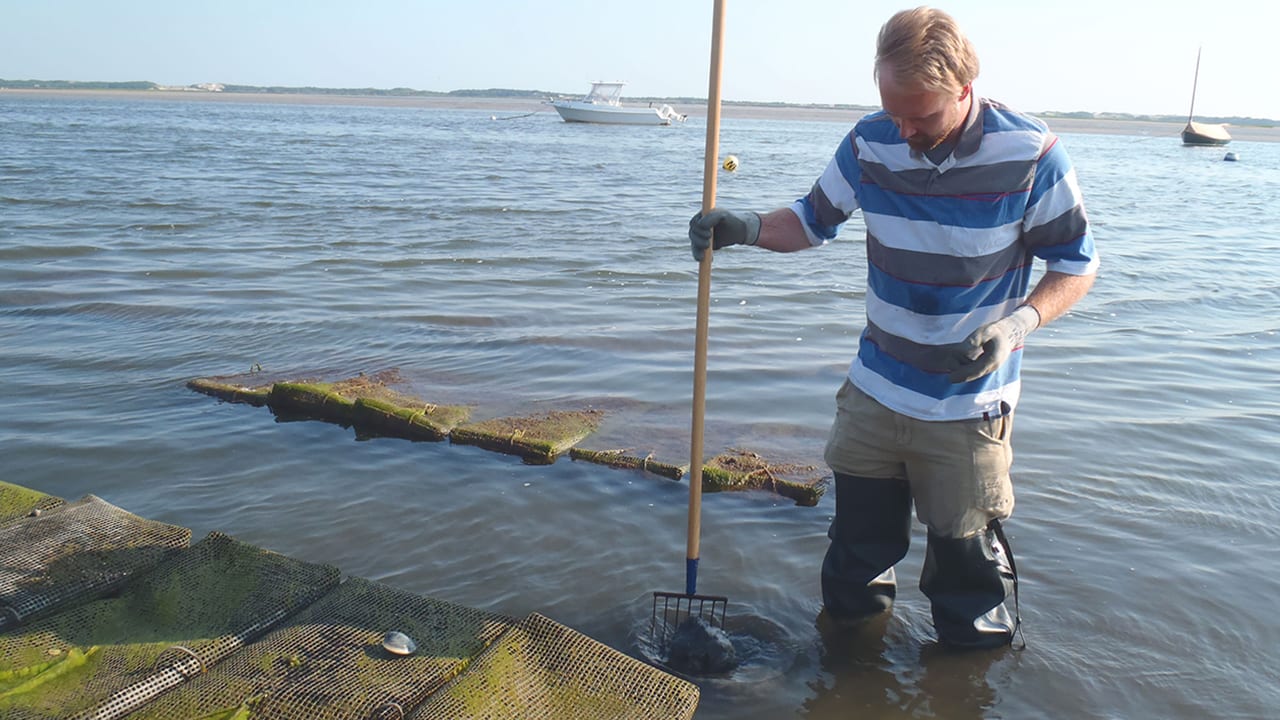News Releases
Sea Grant Funds New Technology to Monitor for Harmful Algal Blooms
A new system using next generation robotic sensors to monitor coastal waters for disease-causing microalgae has been funded by the NOAA Sea Grant Program as part of a national strategic investment in aquaculture.
The PhytO-ARM (Phytoplankton Observing for Automated Real-time Management), under development by Woods Hole Oceanographic Institution (WHOI) biologist Mike Brosnahan, will vastly improve our ability to detect harmful algal blooms (HABs) and the toxins they produce and provide aquaculturists, resource managers, and others detailed, real-time information about the bloom using a web-based, user-friendly dashboard.
Read MoreWoods Hole Sea Grant Awards Funds to Six New Coastal Projects
The Woods Hole Sea Grant program has awarded researchers from WHOI and other Massachusetts academic organizations funds for new projects, representing a total anticipated investment of nearly $1.5 million.
Read MoreStudy Provides Measurement of Nitrogen Removal by Local Shellfish
A new study by Woods Hole Sea Grant, Cape Cod Cooperative Extension, and the Mashpee Department of Natural Resources provides the first comprehensive measurement of nitrogen removed by shellfish harvested from waters off Cape Cod.
Read MoreNew Study Reveals How Sensitive U.S. East Coast Regions May Be to Ocean Acidification
A continental-scale chemical survey in the waters of the eastern U.S. and Gulf of Mexico is helping researchers determine how distinct bodies of water will resist changes in acidity. The…
Read MoreStudy Assesses Nations’ Vulnerabilities to Reduced Mollusk Harvests from Ocean Acidification
Changes in ocean chemistry due to increased carbon dioxide (CO2) emissions are expected to damage shellfish populations around the world, but some nations will feel the impacts much sooner and more intensely than others, according to a study by scientists at Woods Hole Oceanographic Institution (WHOI).
Read MoreWHOI to Host Public Forum on Seafood Security
The Woods Hole Oceanographic Institution (WHOI) will host a public forum on May 25 from 2 p.m. to 5 p.m. in Redfield Auditorium on the theme ÃÂÃÂThe Seafood Dilemma: Does it Matter Where We Get Our Seafood? The Balance of US Production, Imports, Wild Capture, and Aquaculture in US Seafood Supply.ÃÂÃÂ
Read MoreResearchers Report Potential for a Moderate New England ‘Red Tide’ in 2011
Scientists from the NOAA-funded Gulf of Maine Toxicity (GOMTOX) project issued an outlook for a moderate regional bloom of a toxic alga that can cause ‘red tides’ in the spring…
Read MoreResearchers Issue Outlook for a Significant New England ‘Red Tide’ in 2010
Today, scientists from the NOAA-funded Gulf of Maine Toxicity (GOMTOX) project issued an outlook for a significant regional bloom of a toxic alga that can cause ‘red tides’ in the…
Read MoreResearchers Report Potential for “Moderately Large” Red Tide Outbreak in the Gulf of Maine Region for 2009
The potential for an outbreak of the phenomenon commonly called “red tide” is expected to be “moderately large” this spring and summer, according to researchers with the Woods Hole Oceanographic…
Read MoreWHOI and RTDC Announce Technology Transfer Partnership
The Woods Hole Oceanographic Institution (WHOI) and the Regional Technology Development Corp. (RTDC) of Cape Cod announced jointly today the signing of a technology transfer and entrepreneurial services agreement designed…
Read MoreIn Computer Models and Seafloor Observations, Researchers See Potential for Significant 2008 “Red Tide” Season
Researchers from WHOI and North Carolina State University are preparing for a potentially big bloom of harmful algae in New England waters this spring. A combination of abundant beds of algal seeds and excess winter precipitation have set the stage for an Alexandrium bloom similar to the historic “red tide” of 2005. Weather patterns and ocean conditions over the next few months will determine whether this year’s algal growth affects coastal shellfishing.
Read MoreKing Abdullah University of Science and Technology and WHOI Finalize Research Collaboration
King Abdullah University of Science and Technology (KAUST), a new world-class, graduate-level scientific research university now under development, finalized an agreement today with Woods Hole Oceanographic Institution (WHOI) to collaborate on marine research projects in the Red Sea.
Read MoreNew Study Reports Large-scale Salinity Changes in the Oceans
Tropical ocean waters have become dramatically saltier over the past 40 years, while oceans closer to Earth’s poles have become fresher, scientists reported today in the journal Nature. Earth’s warming surface may be intensifying evaporation over oceans in the low latitudes–raising salinity concentrations there–and transporting more fresh water vapor via the atmosphere toward Earth’s poles.
Read MoreCoastal Environmental Research Camp Attracts Seven International Students to WHOI
Students from Canada, Slovakia, South Africa, and Trinidad and Tobago are spending two weeks at the Woods Hole Oceanographic Institution (WHOI) participating in a research camp focused on coastal environmental research. The students won an international competition to participate in the camp, the first held in the United States.
Read More


